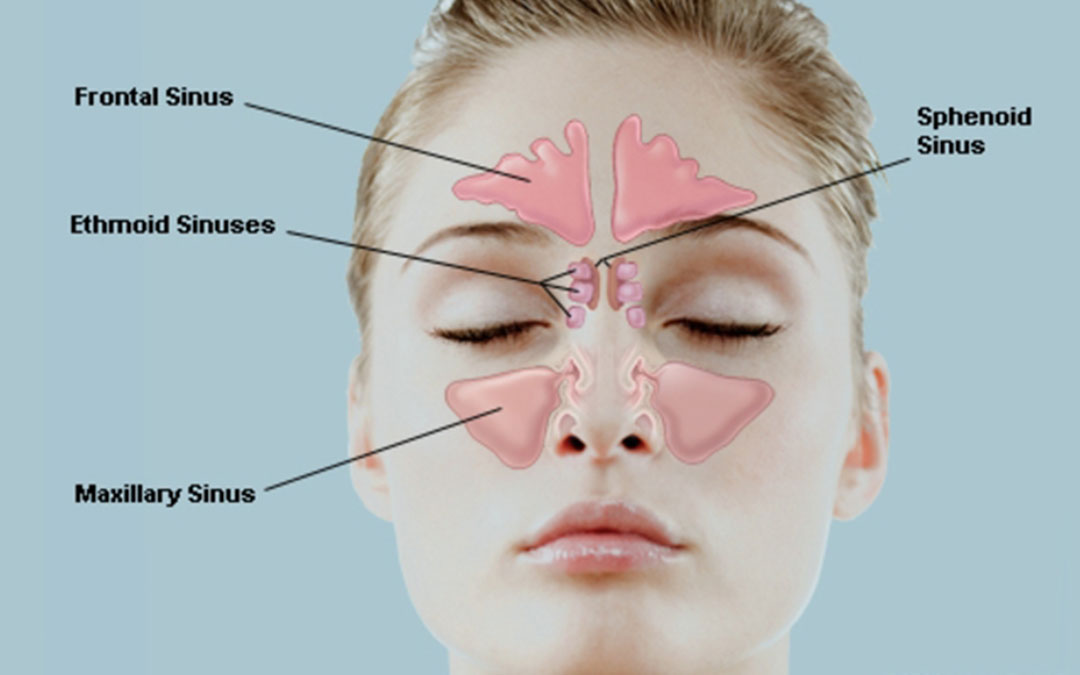Sinus surgery, also known as sinus surgery or sinus surgery, is a medical procedure performe to treat various conditions affecting the paranasal sinuses. The paranasal sinuses are air-fille cavities in the bones of the face and skull that are connecte to the nasal passages. When these sinuses become block, inflamed, or infected, it can lead to chronic sinusitis or other sinus-related issues. Sinus surgery aims to alleviate symptoms and improve sinus function.
Sinus Polyps: Nasal polyps are benign growths in the nasal and sinus passages. Surgery may be needed to remove polyps that obstruct the sinuses, causing breathing difficulties and recurrent sinusitis.visit our Hospital.
Chronic Sinusitis: Chronic sinusitis is characterized by recurring inflammation and infection of the sinus cavities. When symptoms persist despite conservative treatments, sinus surgery may be recommended to improve drainage and alleviate symptoms.

major types of paranasal sinuses
Frontal Sinuses: The frontal sinuses are locate in the forehead, just above the eyebrows. There are two frontal sinuses, one on each side of the forehead. They communicate with the nasal cavity and play a role in filtering and humidifying inhale air.
Maxillary Sinuses: The maxillary sinuses are the largest of the paranasal sinuses and are locate in the maxilla (upper jaw) on both sides of the nose. These sinuses are close to the upper teeth and can sometimes cause referre pain if they become infecte or inflame.
Ethmoid Sinuses: The ethmoid sinuses are a group of small, air-filled cavities located between the eyes and behind the bridge of the nose. There are multiple ethmoid sinuses on each side, and they are divided into anterior and posterior groups. The ethmoid sinuses are important for the sense of smell and play a role in draining mucus from the nasal passages.
Sinus Surgery Procedure
Anesthesia: The surgery is typically perform under general anesthesia, although in some cases, local anesthesia with sedation may be use.
Positioning: You will be positione on your back with your head slightly tilte backward to allow the surgeon access to your nasal passages.
Visualization: An endoscope, which is a thin, flexible tube with a camera attache to it, is insert into one of your nostrils. The camera provides real-time images of the sinus cavities, allowing the surgeon to see the problem areas.
Sinus Opening: The surgeon may use small surgical instruments, such as microdebriders or powere instruments, to remove obstructions, polyps, or disease tissue from the sinuses. The goal is to open up the blocke or narrow sinus passages, allowing for better drainage and ventilation.
Correction of Deviate Septum (if need): If a deviate septum is contributing to the sinus issues, the surgeon may perform a septoplasty during the same procedure. This involves straightening the septum to improve airflow.
some general precautions
Follow Medical Advice: Adhere to all post-operative instructions provide by your surgeon and healthcare team. These instructions are tailore to your specific surgery and condition, and compliance is crucial for a successful recovery.
Rest and Limit Physical Activity: Plan to take it easy during the initial recovery period. Avoid strenuous physical activities, heavy lifting, and activities that may strain the surgical area.
Keep the Head Elevate: Sleeping with your head elevate can help reduce swelling and promote proper drainage. Use extra pillows to prop yourself up while sleeping.
Nasal Care: Follow your surgeon’s guidance for nasal care, which may include using saline nasal sprays or rinses to keep the nasal passages clean and moist.
Avoid Blowing the Nose: Refrain from blowing your nose forcefully during the early recovery stages, as this can disrupt the healing process. Gently dab the nose if necessary.
Medication Management: Take all prescribed medications as directed, including pain relievers and antibiotics if prescribe. Do not discontinue medications without consulting your healthcare provider.
Avoid Smoking and Alcohol: Smoking and alcohol consumption can interfere with the healing process and increase the risk of complications. It’s advisable to avoid them during your recovery.
Risk Factor
Bleeding: Some degree of bleeding is common during and after sinus surgery. While it is typically manageable, excessive bleeding can occur in rare cases and may require medical attention.
Infection: Surgical procedures carry a risk of infection, including sinus surgery. Patients may be prescribe antibiotics before and after surgery to reduce this risk.
Pain and Discomfort: Pain and discomfort in the nasal and sinus areas are common after sinus surgery. This is usually temporary and can be manage with pain medications as prescribe.
Swelling: Swelling of the nasal and facial tissues can occur following surgery, potentially affecting breathing through the nose. It usually subsides as the healing process progresses.
Changes in Sense of Smell and Taste: Some patients may experience temporary changes in their sense of smell or taste after sinus surgery. This is often due to swelling or irritation of the nasal passages and typically improves with time.
Scarring: Scarring of the nasal passages can occur, particularly with more extensive surgeries. Scarring may affect the nasal airflow and sinus function.
